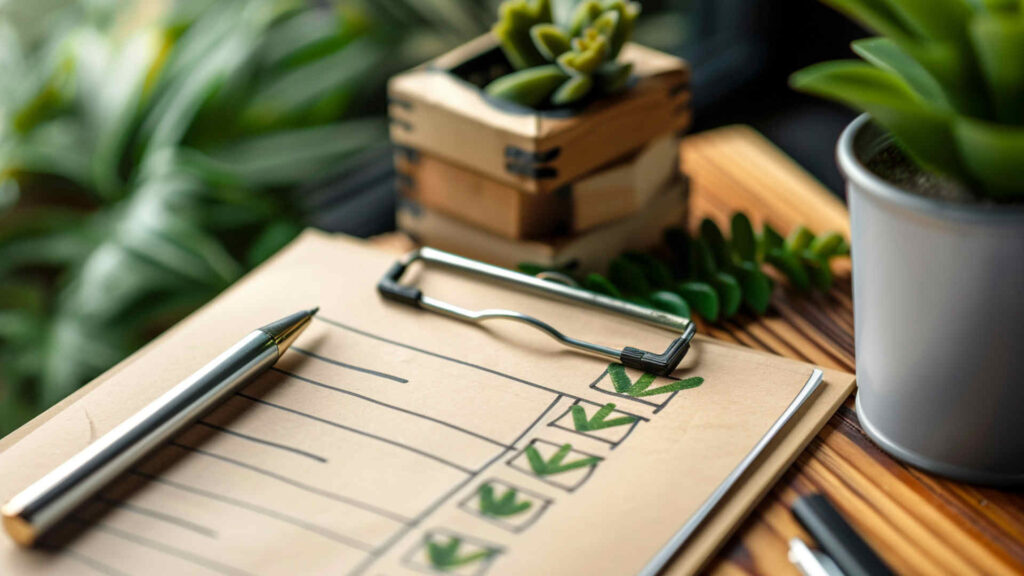Before making a purchase, work up the shopping hierarchy. You could make a list of the top 10 things needed or wanted, placed in order of the most important. Then go through the 8-step checklist process for each one before actually buying anything.

This simple process can maximize savings over time. In the modern world, being frugal can go a long way toward survival and perhaps thriving at some time. So then, here is the list …
Checklist For Saving Money
Reference this for an easy remembrance.
1) DELAY purchase for month or year? If yes, need vanishes.
2) NEED is there. Is something around that can do the job?
3) BORROW from friend or neighbor. Especially for single usage.
4) FREE from locations online or offline.
5) CHEAP alternatives? Do web search for these.
6) USED purchase. Buy the discounted price instead.
7) MAKE it instead. Do research online.
8) NEW as the final option.Just remember: DELAY, NEED, BORROW, FREE, CHEAP, USED, MAKE, and NEW.
The first words are the most important ones and can help one to remember the process.
Detailed Real Ways To Save Money
Let’s now go over the 8-part list with an examination of action details that could be considered.
1) DELAY. Can the purchased be delayed for a month or year?
The first question to ask is “Can this purchase be delayed if there is no real need?”. If yes, skip buying altogether and wait the month or more. If no, there may be a need for the thing in question. So then proceed to the next 7 ordered steps.
2) NEED. Could the need be subdued? Again question if the thing is absolutely needed.
Thinking twice can help one be sure. Here are some alternatives to erase having the need for buying particular things.

- If physical books and knowledge are your thing, how about online sources instead? The internet is free to search.
- Get in the habit of using real washable towels instead of paper towels, saving both money and physical disposal.
- Try alternative furniture with wooden pallets that can be repurposed to make tables, shelves, or even bed frames.
- Mason Jars for both storage and decoration. Instead of buying fancy containers, use these jars for organization and lighting decoration.
- Try oatmeal for skin treatments, saving on skin or face mask products.
3) BORROW. Is there a friend or neighbor that could help with one-time usage?
- Mow the lawn once a month? Borrow the lawnmower and other tools if possible.
- Any exercise equipment that is expensive. Could pay a neighbor for each usage.
- Borrow small things like DVDs or books or a fancy set of hosting silverware.
4) FREE. Get free from many locations either online or offline.
Search your favorite local online opportunities for free stuff.
- A great option for free or inexpensive furniture.
- Also great for a free pet for example, minus the vaccinations or other initial upkeep.
- Try Freecycle, Facebook Marketplace, OfferUp, or Craigslist. These each have free sections. Bookmark them in your favorite browser for daily or weekly easy searching.
- Try local churches and nonprofits. These often have programs to distribute free furniture, clothes, and even food to families in need. Reach out to organizations like St. Vincent de Paul, Red Cross, soup kitchens or food banks.

5) CHEAP. Research any alternatives. Do a basic web search.
Replace expensive things with cheap options instead.
- Try Tello for a smartphone plan. The link is an affiliate one, but offers a discount. There is much saving to be done over time.
- Reusable water bottle. Invest in a good quality reusable water bottle and filter tap water at home using a Brita filter or a similar system. You’ll save money and reduce plastic waste.
- Go to local thrift stores for clothing. Spend a day going to one or a few of these. Clothing spending could come down 80% or so with this fantastic method.
- NO gym membership. Jog, bike, or hike for cheap. Or even view online video regarding how to exercise cheaply.
6) USED. Stick to buying used when possible. Buy at this discounted rate to save.
- Like discount movies or clothes. Visit eBay online, local yard sales, local OfferUp or Craigslist search, or local thrift store if possible.
- Absolutely buy used. When the need vanishes, back this plan up with reselling the product online on eBay, Facebook Marketplace, or OfferUp for example. You may end up being out only a few bucks when all is completed.
7) MAKE. Learn to make whatever is needed if possible. Online tutorials can assist.

- Make a DIY garden. Grow your own herbs and vegetables. Even growing in containers can reduce grocery bills, and it’s much cheaper than buying fresh herbs.
- To follow the last one, make a DIY rain barrel to collect rainwater for watering your garden. This reduces water bills and is an eco-friendly option.
- DIY repairs. Make sure to research for online videos if needing to repair something. Save on plumbing or landscape costs through the DIY approach.
- DIY clothing or footwear. Mend things up with sewing, with hemming, with repair work. Using online videos or information sources for tutorials.
8) NEW. At last, the final and last option if absolutely required.
And with this final last option, there are still ways to be smart.

- Look for retail or online coupons before buying the thing.
- Compare prices of different stores selling the same thing at a couple retailers.
- Alternatively, perform a Google Shopping search, one that reveals prices from many places.
- If the price is higher than desired, wait for an online sale if possible.
How To Save Money Effectively
So there it is. A plan has been laid out in order, to accomplish the feat of saving cash for whatever purchase one may have in mind. This system can benefit both large and sometimes even small things that are often bought. If it becomes a habit to think of the 8-step process, one has the advantage of creative thinking to navigate both saving and expending.
Leave a Reply